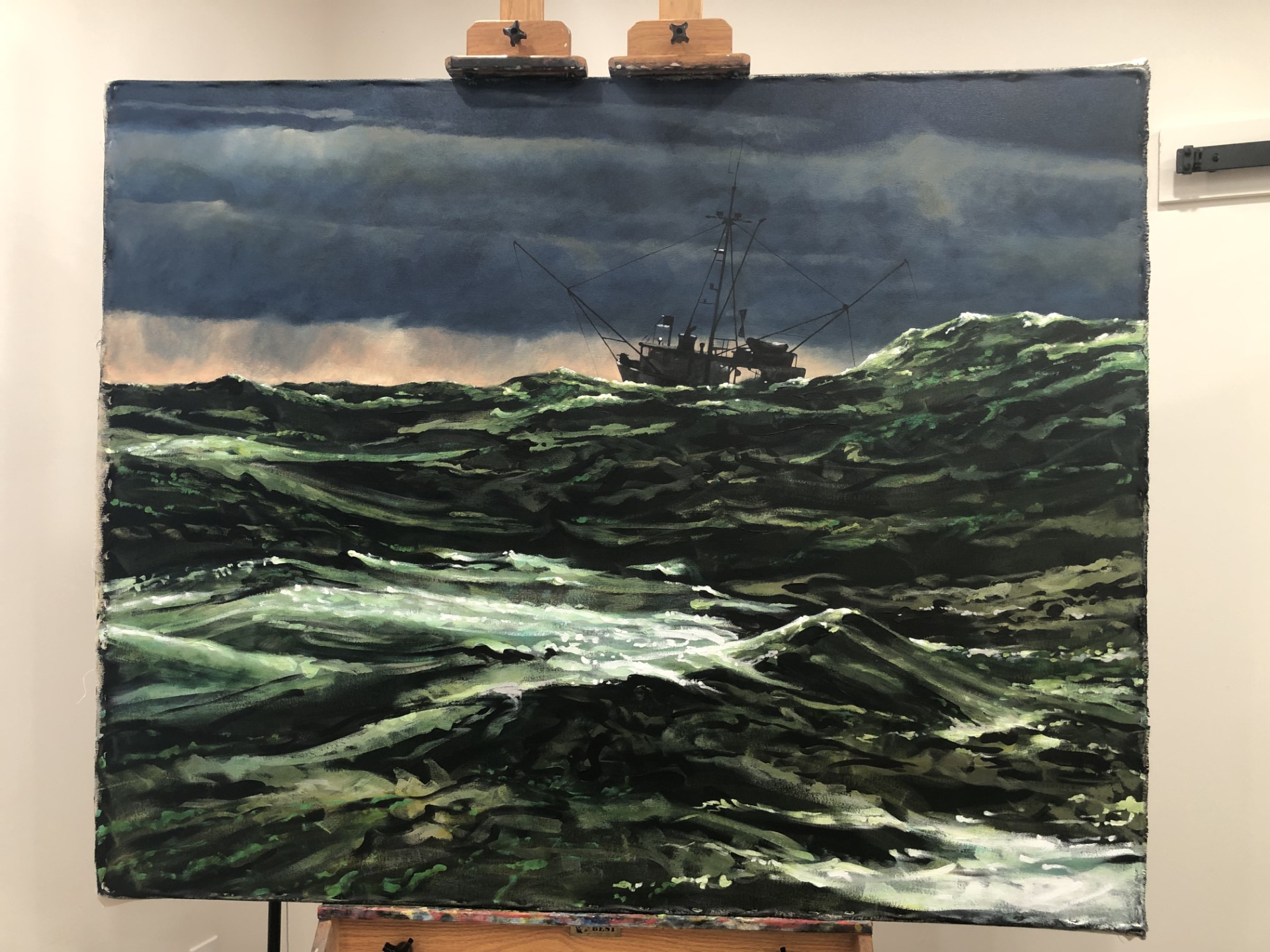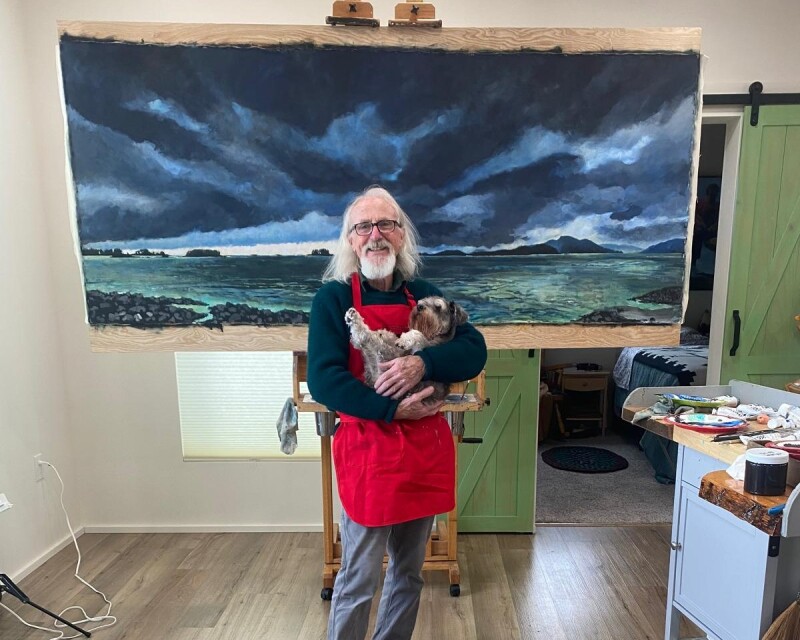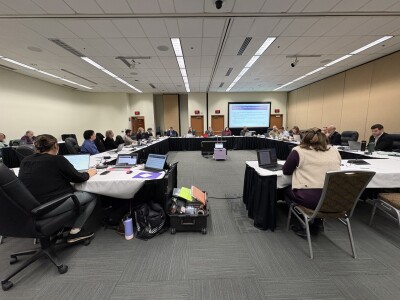After 45 years trolling for salmon on the waters of Southeast Alaska, artist Stephen Lawrie is mixing acrylics with water in his ongoing quest to tell a story in paintings of the commercial fishing industry and the people who call it home.
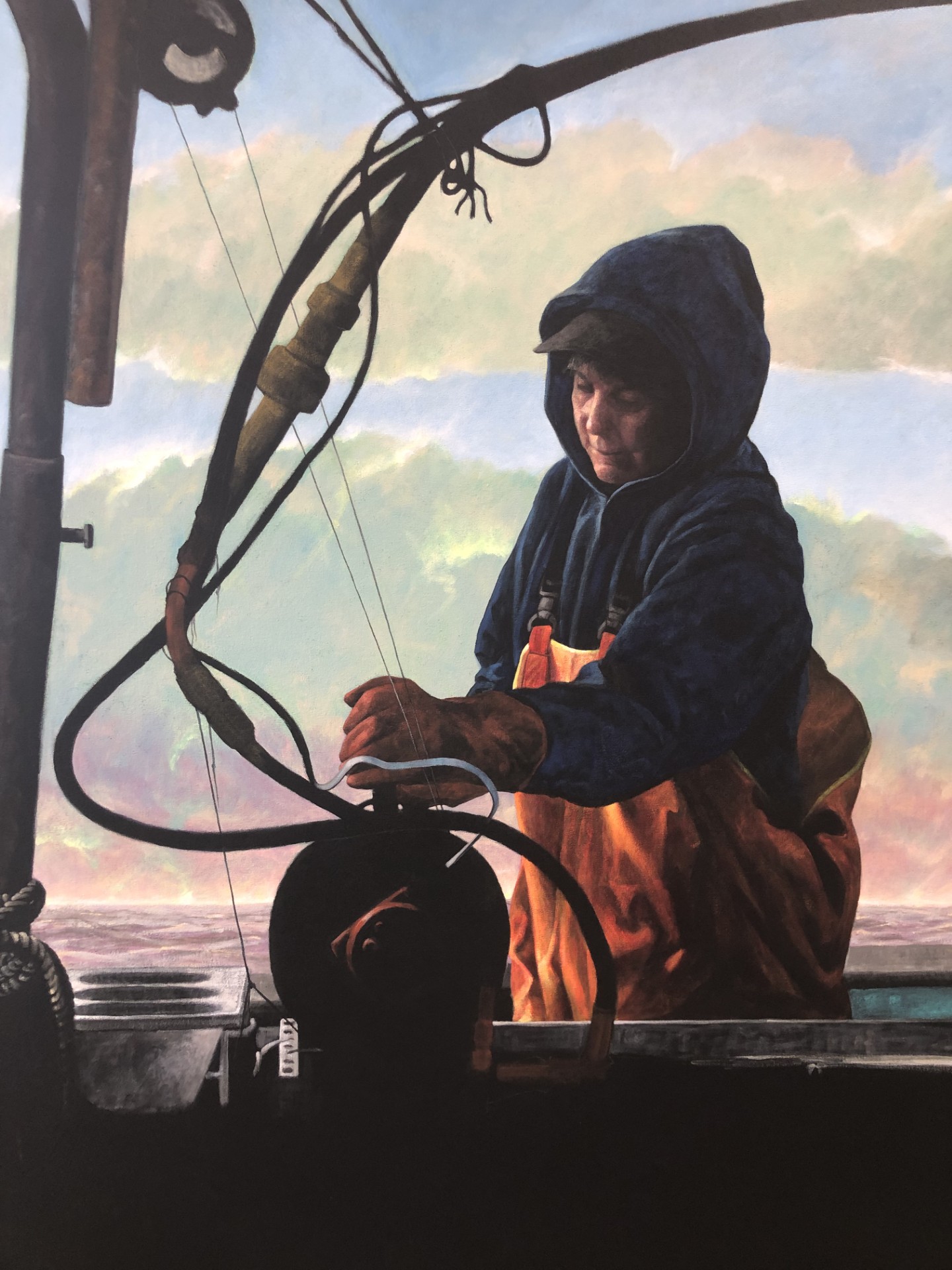
"I am trying to highlight fishing in Sitka in 2025 and the people who are in it," said Lawrie. "Not just the harvesters. We are all in this together," As June ushered in, Lawrie was still at work on paintings for the "This Thing We Call the Ocean" exhibition at the old Pioneer Bar, a gathering place for commercial fishermen in Sitka. The exhibition at the Pioneer Bar, which will run from June 21 through July 6, is hosted by Chris Heim and the Pioneer Bar crew and sponsored by Roger and Mary Hames and the Sitka Conservation Society.
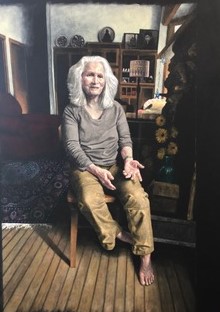
Lawrie worked as a commercial fisherman from 1975 through 2018, while owning and operating four different salmon trollers during that time. He began exhibiting his canvases in 1984, but prior to that, he already had pieces in several galleries,
"Fishermen that I know do know they have to be conservationists, said Lawrie, a native of Wellington, New Zealand, who attended the Elam School of Fine Arts in Auckland for a year. He first came to
The subject of one of the paintings he is working on in early June is a U.S. Coast Guard rescue unit that his son Ben Lawrie, a former commercial harvester, works with to train Coasties on helicopter rescues at sea. When Ben is unavailable, his dad said he pitches in. Another son, Matt, followed in his father's footsteps as a troller, and also harvests shrimp. Daughter Sarah ran the AmeriCorps program in Sitka for 15 years until funding ended and a second daughter, Allison, is a nurse at the Southeast Alaska Regional Health Consortium's hospital in Sitka.
"His paintings capture a lot of the most important fishermen in Sitka," said Andrew Thoms, executive director of the Sitka Conservation Society. "It's about the relationship we have as fishermen with the ocean." Exhibition organizers describe Lawrie as someone deeply involved in and knowledgeable about fisheries, and also a talented artist.
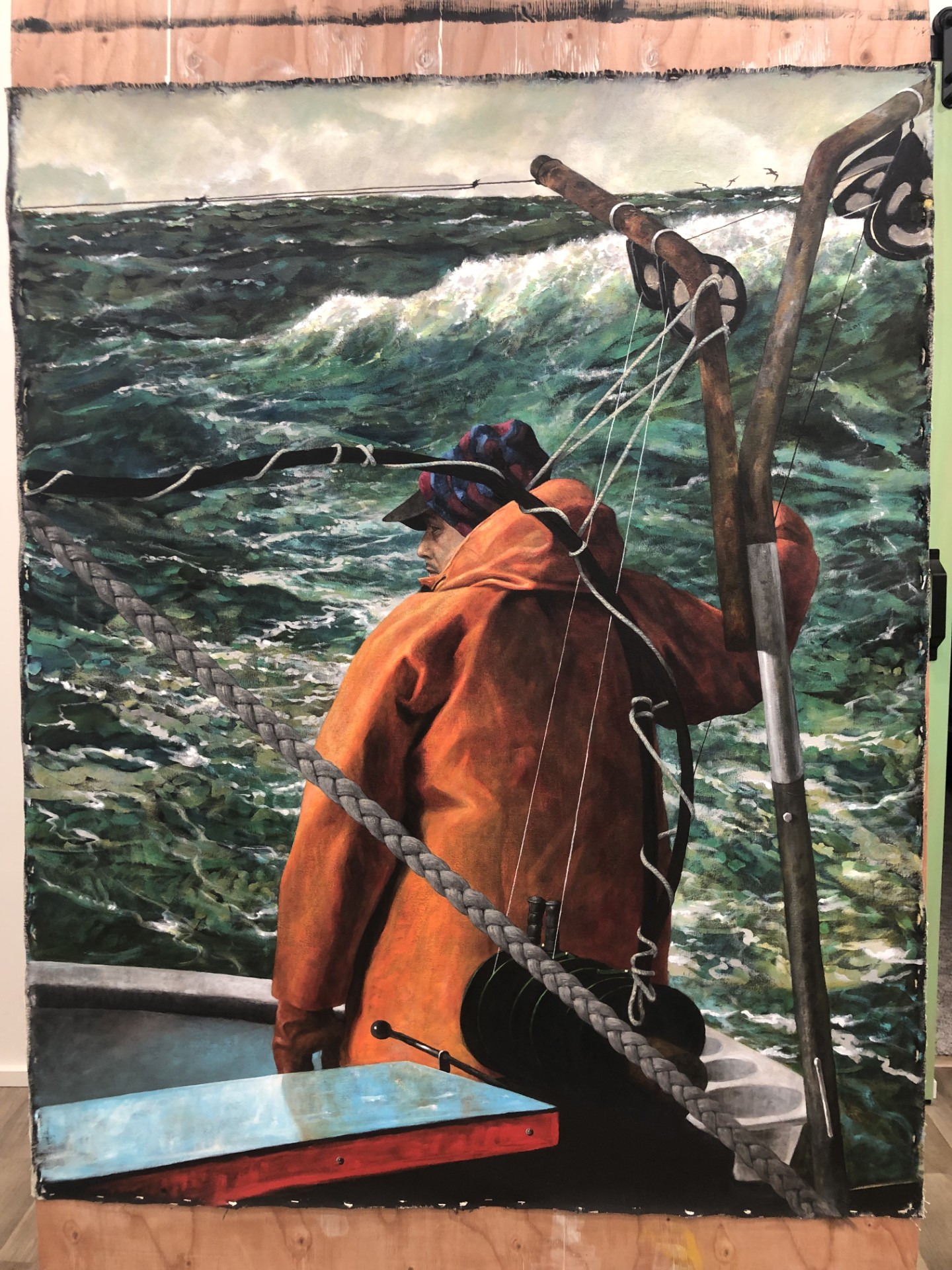
Alaskans born here who care about the natural environment are taking care of and stewarding these resources and passing then on to future generations," said Mary Catharine Martin, communications director for SalmonState, a nonprofit that supports safeguards for wild salmon and their habitat.
The ocean has for decades given form to this community of seafood harvesters, also including their families and friends, and now numerous tourists who flock to Sitka each year.
While commercial fishermen comprise the bulk of customers at the Pioneer Bar, plans are to also bring clients of the community's lucrative charter boat fishing companies down to see Lawrie's work. "It's not about politics," Thoms said. "It's about the people who go to sea on boats to make a living and the people who support those people. Nothing like this has ever happened at the P-Bar before."
Lawrie himself acknowledged that in all his years in Sitka he hasn't spent much time at the P-Bar, what with being busy fishing and raising four kids.
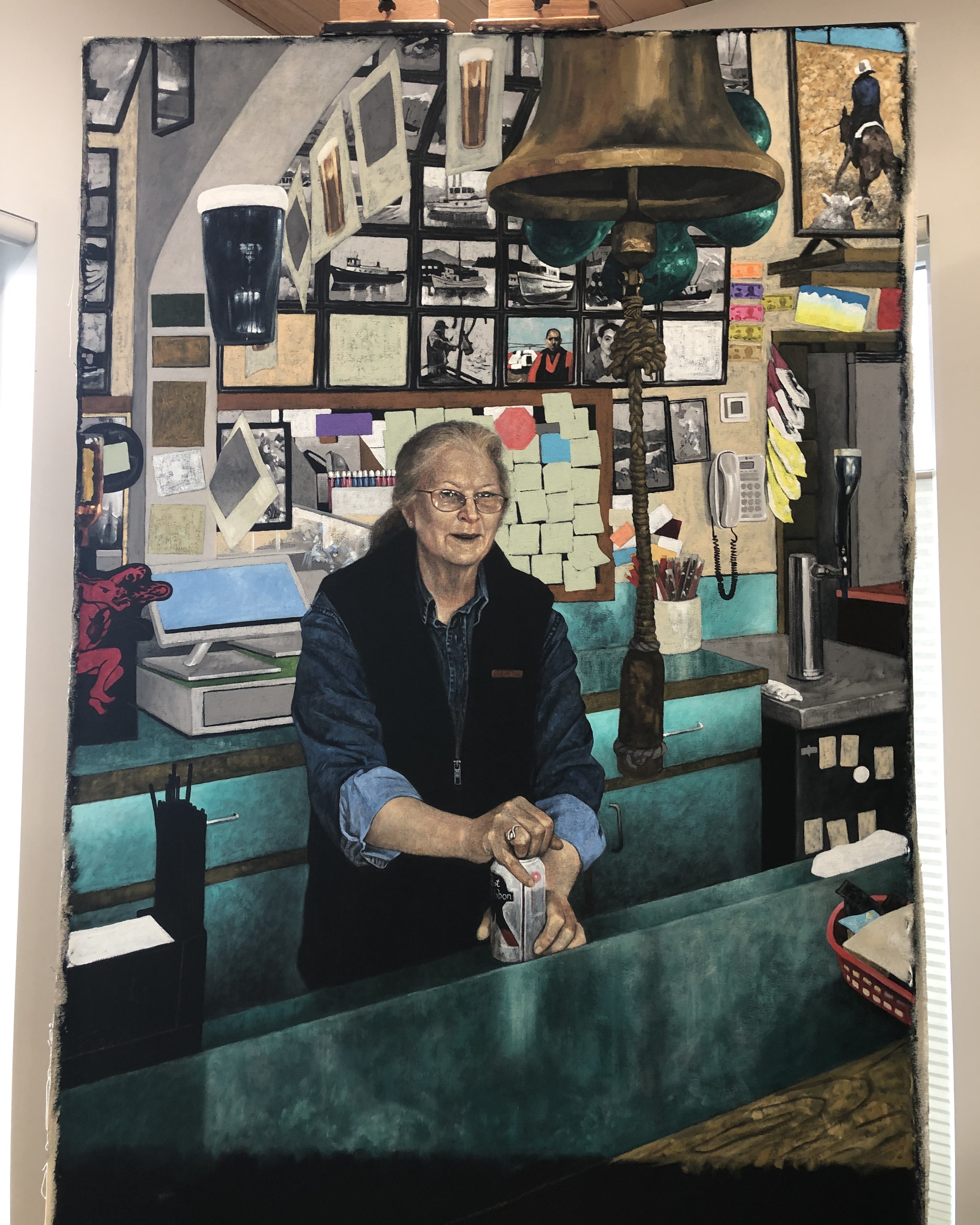
Having retired from trolling five years ago, he said he is happiest now in his home studio or at the Sitka Conservation Society's artist retreat, the Sea Pony Farm, in Lisiansi Inlet at Pelican. Sitka artists Eric and Pam Bealer left their remote homestead property to the Sitka Conservation Society's Living Wilderness Fund, to be used as a creative retreat and field station for stewardship activities on surrounding Tongass National Forest lands.
Lawrie began drawing in elementary school in New Zealand, where he was encouraged by the nuns who were his teachers. Then in high school, Kim Adams, a teacher and working artist, was his mentor.
"I'm a slogger, but I've always been able to illustrate or paint" he said. So while he worked as a commercial fisherman he kept on taking photos while fishing, to be used later for his work on canvases.
His life now, as a retired troller, "is like a dream come true," he said. Five years after retiring from fishing, the 71-year-old artist continues to paint with a passion. "My heart is in the people," he said.
About one-third of his paintings are of people working on fishing vessels. The rest are portraits of people in the fishing industry for whom he said he has a lot of respect. "I am happiest here in my studio or at the property at Pelican," he said. "I have a beautiful view out the window of my house."
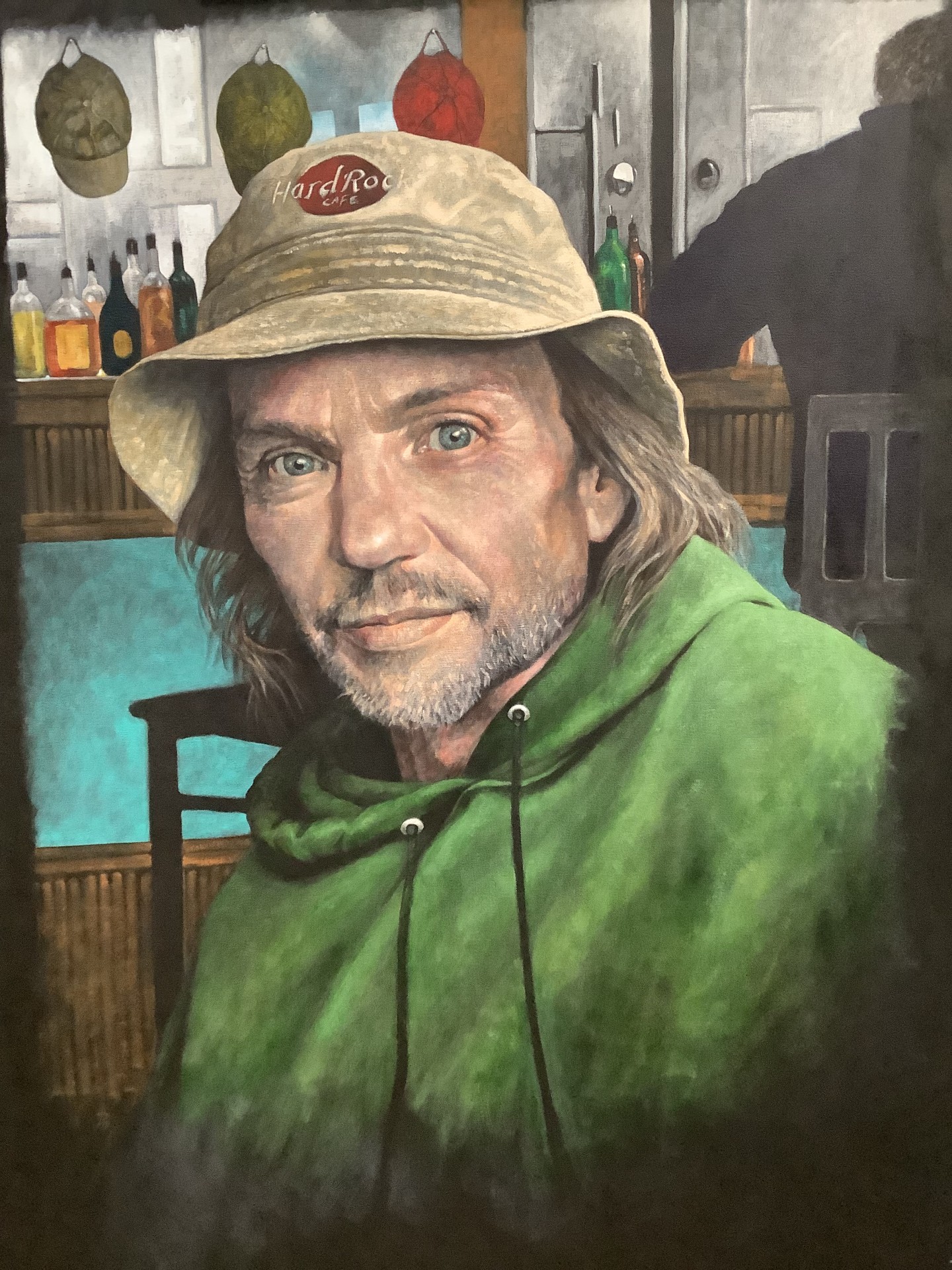
His paintings are in two galleries in Sitka. Over the years he has also had exhibitions the Centennial Hall in Sitka, in his native New Zealand and the Lower 48 states, including Fort Worth Texas, where a bunch of his paintings sold.
These days Lawrie said he's content with life as a painter. His heart is with the fishermen and others he paints in Sitka, as well as some commissioned work. He's hoping for a good turnout at the Pioneer Bar exhibition, but meanwhile happy with life in Sitka. "I feel really privileged," he said.
